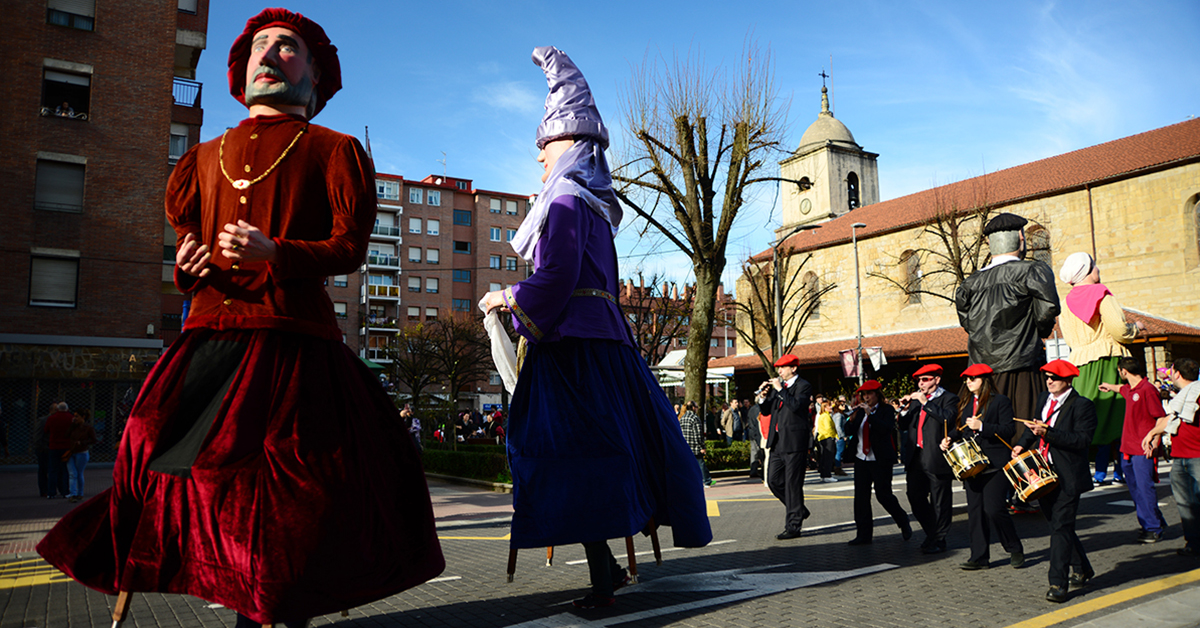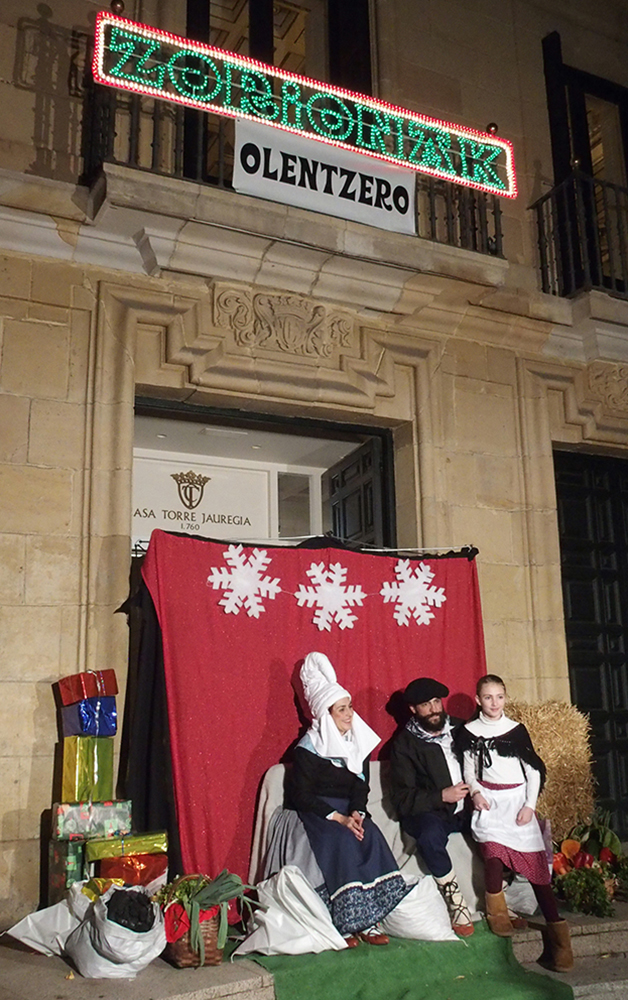Basque ethnography at a glance
Leisure and festivities sharply contrast with work. Any festive calendar is studded with celebrations in the public and private spheres, and a mix of elements from the past and more recent ones.
The autumn – season and cycle – gets underway with St. Michael’s Day, a real stalwart of the saints calendar and which is celebrated in Artzentales and Sestao, to name a few. Halloween leads the way into November. Even though it is an imported festivity, we must not forget scaring neighbours with carved pumpkins already existed in days of yore. On All Saints’ and All Souls’ Days, relatives and friends visit the cemeteries and that has led to the borrowed “tradition” of bringing and laying flours and wreaths on the graves.
We are soon in December and Christmas is coming, which some authors consider the Winter Solstice season. The period between Christmas Eve and Epiphany is a time of special lunches and dinners; Olentzero and Mari Domingi and the gifts they bring lay claim to the Christmas bonuses; New Year’s Eve parties are everywhere; and ends with the Three Kings Parade, with the three wise men arriving on horseback, on floats or by boat.
This is followed by what can be called the traditional Carnival season: St. Anthony the Abbot (17 January), with the blessing of animals; the Candlemass-St. Blaise-St. Agatha trilogy, with the blessing of candles, sanblases (St. Blaise throat cords) and charity collections that have, sometimes, become a reason for get-togethers in many towns. One noteworthy example is the one held at Kastrexana chapel. The “Carrastoliendas” charity collections still take place in Gordexola and Trapagaran. The “burial of the sardine” is still held in Portugalete and Sestao, along with French toast being served in many homes and the fancy dress parades. Carnival ends with Marzas (groups of young people singing for alms) that appear and disappear, depending on the year, in Karrantza and Lanestosa.
Lent, which is barely observed nowadays, gets spring underway and leads up to Holy Week. There are the odd procession and Ways of the Cross, with the highlights being the Passion Play in Balmaseda and “Cornites Day” (a pilgrimage to the local mountains on Easter Monday when they eat cornites or rolls filled with chorizo or hardboiled egg) in Santurtzi. Corpus Christi has also not withstood the test of time.

St. Vincent festivities in the neighbourhood of the same name (Barakaldo, 24/01/2016). Photo: E. X. Dueñas.
Patron saint days are celebrated throughout the year (St. Nicholas, St. Vincent, St. Sebastian, St. Joseph, St. George, St. Isidore, St. Anthony…). The peak season of the festivities is in summer, after the bonfires on St. John’s Eve. There are the different Sanpedros (St. Peters) in Sestao, Gueñes and Zalla; the feast day of Our Lady of El Carmen in Santurtzi, Barakaldo and Zalla; the Feast of St. James in Gueñes; Our Lady of the Snows in Artzentales and Lanestosa; Feast of the Assumption in Portugalete and Sopuerta; St. Roch in Turtzioz and Portugalete; St. Bartholomew in Alonsotegi and Sopuerta; Saint Cosmas and Damian in Gordexola, etc.
If that were not enough, each town has a wide range of neighbourhood and district festivities, with a variety of programmes, along with traditional or recently introduced fairs and markets, folklore festivals and a wealth of municipal activities that are interspersed with those of local groups.
Emilio Xabier Dueñas – Folklorist and ethnographer



